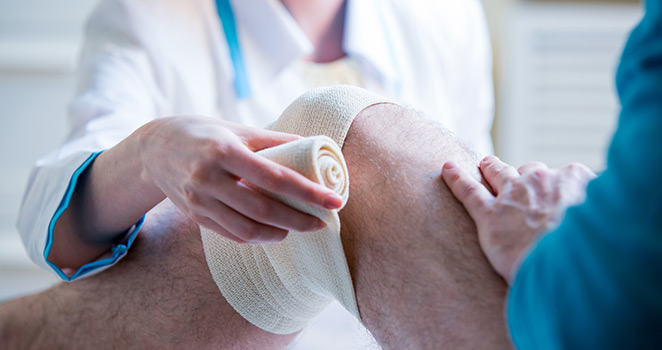Atrium Health Navicent Musculoskeletal Care Orthopedic Trauma

Leg Length Inequity/Discrepancy
Differences in the length of legs can result due to from a number of different causes that affect bone growth. Leg inequity can lead to additional problems in mobility and spinal alignment that may lead to chronic pain conditions. A physician trained in orthopedic trauma can diagnose the extent of the discrepancy and recommend the right treatment to equalize the limbs, address symptoms, and optimize function.
Causes of Leg Length Discrepancy
A number of problems can lead to leg length inequity/discrepancy. A previous injury to the bone, such as a fracture, can heal in a shortened position. In children, a break or injury to the growth plate at the end of the bone can lead to uneven growing as the years pass. Children also experience faster growing of broken bones as they heal, which can cause an inequity in length on the two sides of the body. Infection of the bone can also lead to growth discrepancies, and this may be the result of a severe injury to the leg.
Diagnosing Leg Length Inequity/Discrepancy
Leg length measurement is a critical part of the diagnostic process. The amount of discrepancy can often determine which treatments can be considered for the best outcome. Patients with inequities may also have leg length discrepancy hip or low back pain because of the uneven distribution of weight when walking and the increased pressure on one side of the body. The orthopedic specialist may use a number of diagnostic methods:
- Computerized tomography (CT) scan of the bone and soft tissues
- Gait analysis
- Physical examination and measurement
- X-ray of the bones
Treatments for Leg Length Inequity/Discrepancy
Leg length discrepancy treatment can include both surgical and non-surgical methods, depending on the severity of the inequity:
- Leg length discrepancy shoes or lifts can provide additional height on one side of the body to help normalize gait and stabilize pressure on the joints.
- Epiphysiodesis is used for growing children to slow down growth in one leg to allow the other to catch up. The surgery involved manipulation of the growth plate to inhibit further growing.
- Limb shortening is done when growth is completed and is done by removing a section of bone from the middle of the leg. Metal plates and screws then hold the bone in place as it heals.
- Limb lengthening is a complex procedure that is generally reserved for patients with larger inequities in leg bones. There are several surgical options to correct the length of one's leg.
The orthopedic injuries caused by trauma can be repaired with skilled treatment by an experienced fellowship-trained surgeon. Both non-surgical and surgical methods, combined with physical therapy, can provide excellent results and improved function for patients with these conditions.